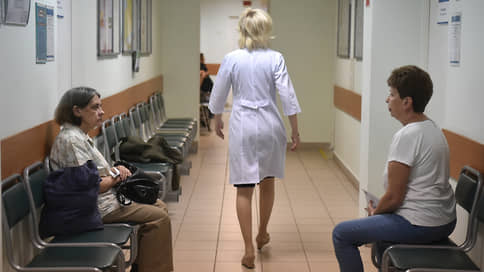In 2024, the volume of employers’ insurance contributions to the Compulsory Medical Insurance Fund will increase by a record 21%
[ad_1]

In 2024, the volume of insurance contributions from employers to the Federal Compulsory Health Insurance Fund (MHIF) will increase by a record 21%, according to the fund’s draft budget, which was approved by the government on Friday. This increase will be achieved through a significant increase in the wage fund and a revision of the very base for payment of contributions. Also, due to the change in the calculation formula, regional contributions to the compulsory medical insurance system for the non-working population will increase noticeably – 14%. As a result, in 2024, the revenue side of the MHIF budget will increase by 13.5%.
In 2024–2026, the MHIF budget will increase due to insurance premiums, while the share of transfers from the federal budget in it will decrease. As follows from the government-approved draft budget of the fund for a three-year period, in 2024 its revenues will amount to 3.7 trillion rubles, expenses – 3.8 trillion rubles, deficit – 147 billion rubles.
Compared to 2023, the revenue side of the MHIF budget will increase by 13.5%. First of all, due to a significant increase in insurance premiums for compulsory medical insurance and tax revenues (by 19.3%). At the same time, the largest increase will be shown by contributions from employers (plus 21.2%, up to 2.2 trillion rubles). For the main category of payers, contribution receipts are calculated at a rate of 5.5% of the wage fund; above the established maximum base value – at a rate of 2.8%. From 2024, the size of this base will increase to 2.2 million rubles. per year per person from 1.9 million rubles. this year (by 15.8%). Let us note that the wage fund, as follows from the explanatory note to the draft budget, according to the forecast of the Ministry of Economy in 2024 will not increase so significantly – only by 9.8%, to 40 trillion rubles.
Taking into account the fact that the contribution rate in 2024 remains unchanged, such a noticeable increase in revenues to the Compulsory Medical Insurance Fund, in addition to an increase in the contribution base, may be caused by a change in the salary structure and an increase in the share of medium- and high-paid workers in it. The 10% increase in the minimum wage next year approved on Friday will also likely play a role – this measure concerns 4.5 million people.
Insurance premiums for non-workers (pensioners, children and the unemployed), which the regions pay to the compulsory medical insurance budget, will also increase noticeably in 2024 – by 13.8%, to 1 trillion rubles. Last year, the Ministry of Finance changed the formula for calculating regional contributions in order to increase their revenues – now their volume is calculated by multiplying the fixed tariff for the cost of medical services per person per year (18.8 thousand rubles) by the cost increase factor, which also takes into account inflation in the country . However, the volume of contributions planned by the project for 2024 exceeds the value that previously, even taking into account the updated formula, should be achieved only in 2025 (see “Kommersant” dated August 8, 2022). This may be explained by an increase in the number of unemployed people: if previously it was predicted at 80.9 million, now it is 81.2 million people.
In total, insurance premiums for workers and non-workers in 2024–2026 will make up the bulk of the fund’s budget – 85–86%. Another component of income, the transfer from the federal budget, will grow in absolute numbers (486.6 billion, 504.3 billion and 526.2 billion rubles, respectively). A third of these funds will go to compensate for the fund’s shortfall in income, the remaining amounts will be distributed in three main areas. As Prime Minister Mikhail Mishustin explained on Friday, 140 billion rubles. in 2024, it will be spent on providing medical care to patients with cancer, 130 billion rubles on providing high-tech care not included in the basic compulsory medical insurance program, 10 billion rubles on medical rehabilitation.
Let us explain that the majority of all expenses of the compulsory medical insurance system will be transferred in the form of subventions to the regional branches of the fund. At the same time, as follows from the draft government resolution prepared by the Ministry of Health, a new adjustment factor for the level of accessibility of medical care will now be used when calculating them. Its use, the department indicates, will make the financing of medical care in the constituent entities of the Russian Federation more uniform.
[ad_2]
Source link






